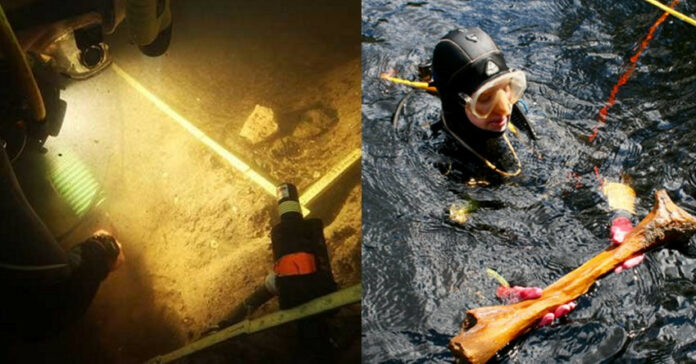Underwater Discovery Challenges Previous Theories
Archaeologists have made a groundbreaking discovery in an underwater sinkhole in Florida’s Aucilla River, uncovering evidence that humans lived in North America about 14,500 years ago. This finding challenges long-held beliefs about when the first people arrived in the Americas.
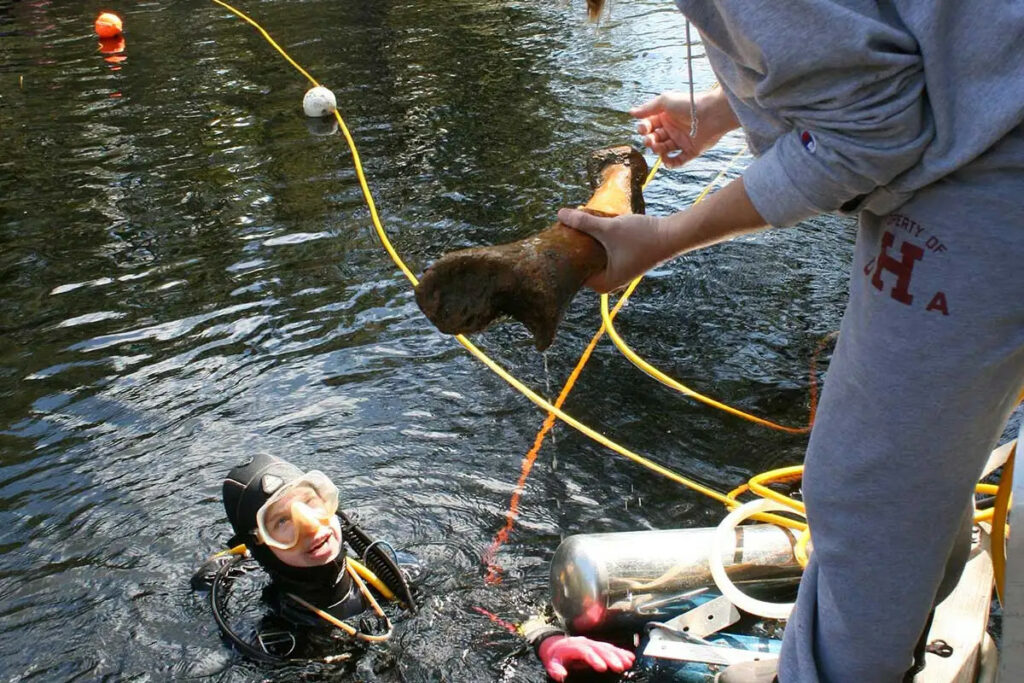
A Glimpse into Prehistoric Life
In the murky depths of the sinkhole, researchers found:
- Stone tools, including a knife and a “biface”
- Mastodon bones with human-made markings
- Fossilized dung
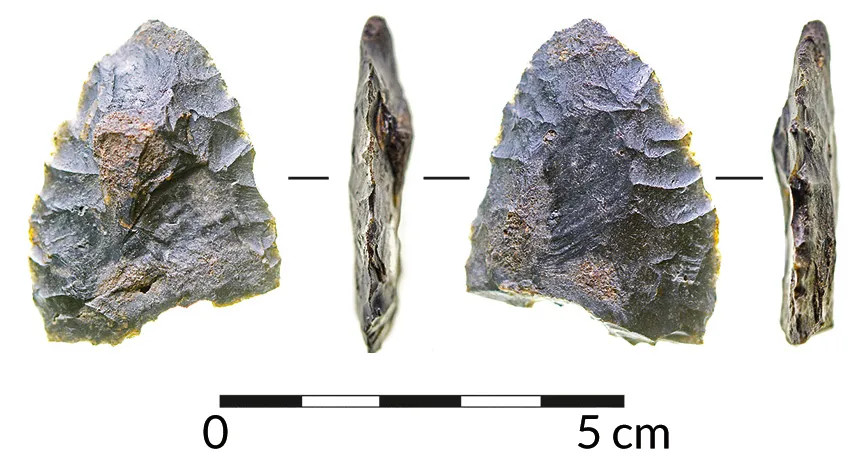
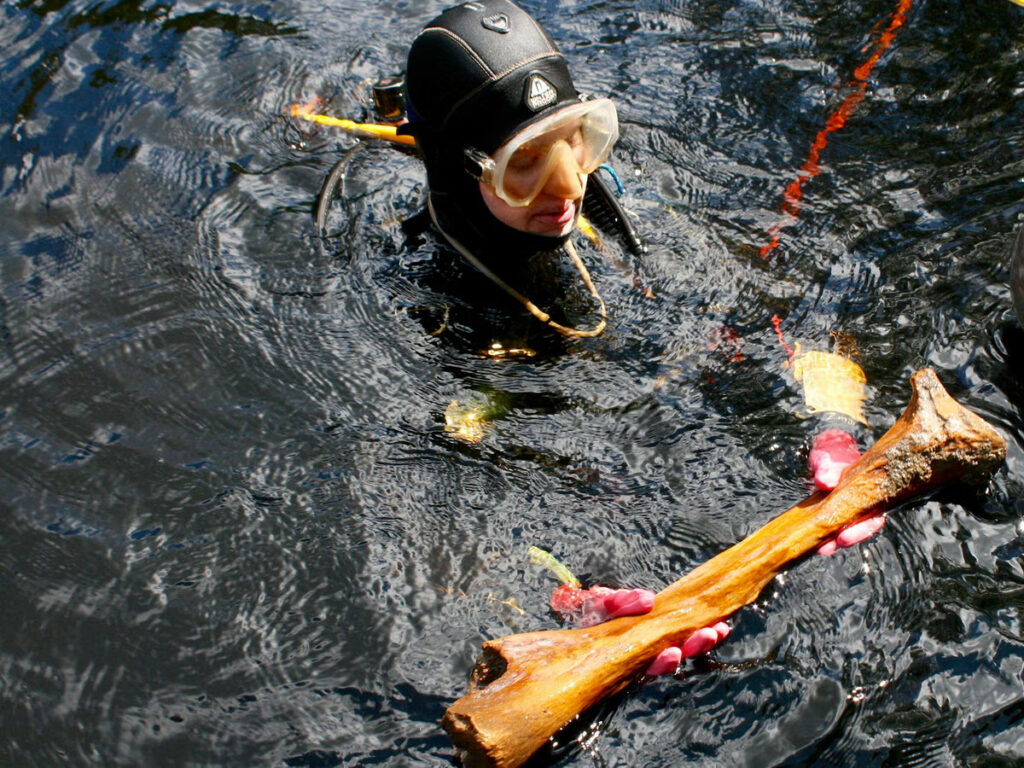
These artifacts were discovered alongside what appear to be canine bones, suggesting that dogs may have accompanied or followed these early humans.
Implications for Human Migration Theories
This discovery:
- Predates the “Clovis people” by about 1,500 years
- Casts doubt on the Bering Strait land bridge theory
- Suggests a more complex colonization of the Americas
Dr. Jessi Halligan, lead diving researcher from Florida State University, proposes that these early inhabitants may have been the first regular nomads of the East Coast, traveling south during winter months.
Rethinking Ancient History
The Florida sinkhole site is now the earliest documented evidence of human presence in the southeastern United States. This finding, along with other recent discoveries across the Americas, is reshaping our understanding of how and when humans first populated the continent.
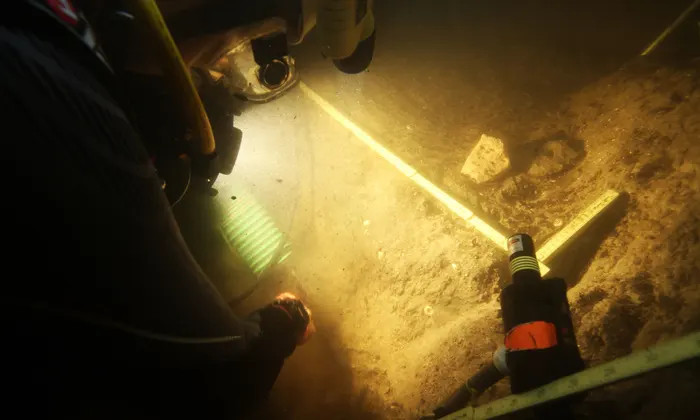
Dr. Mike Waters of Texas A&M University emphasizes the significance of this discovery, stating that it’s “a major leap forward in shaping a new view of the peopling of the Americas at the end of the last Ice Age.”
As researchers continue to unravel this prehistoric mystery, one thing is clear: the story of human migration to the Americas is far more complex and ancient than previously believed.
